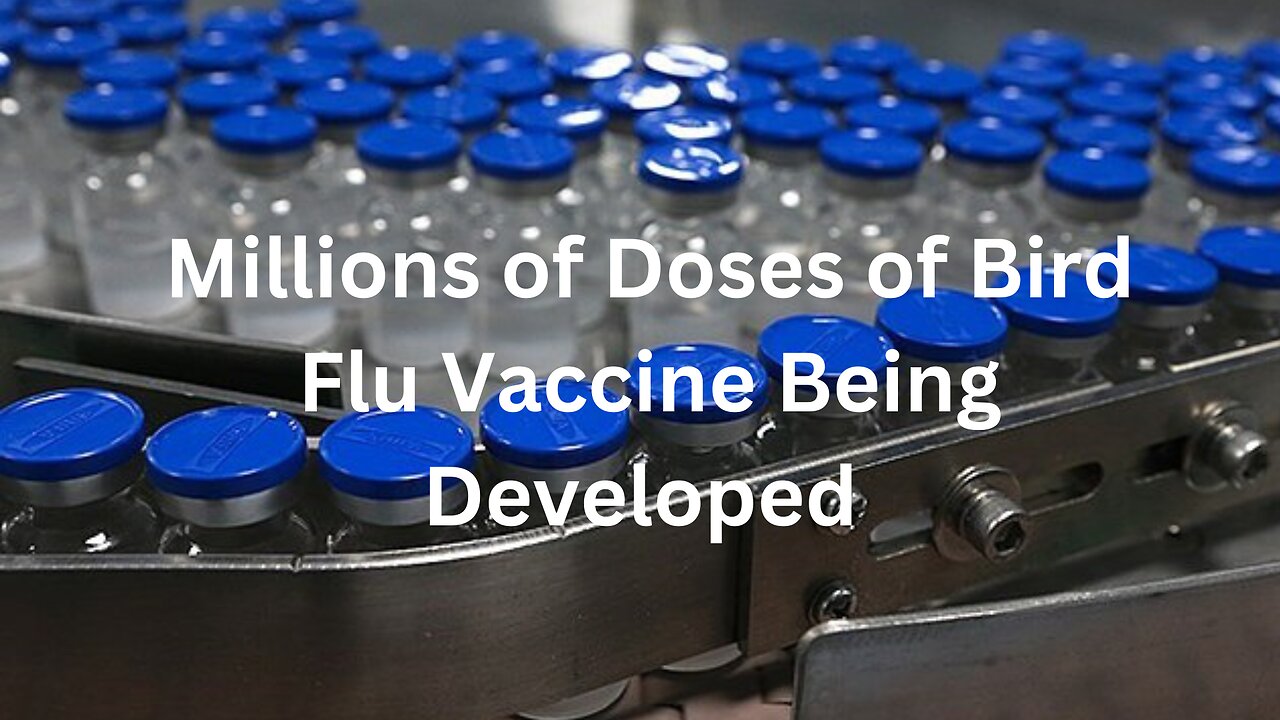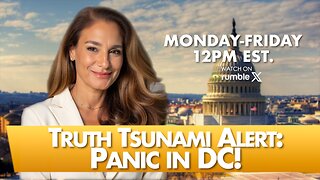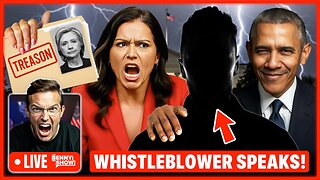Premium Only Content

H5N1 Vaccine Rollout: Precautionary Measure or Election Strategy?
The Assistant Secretary for Preparedness and Response at the US Department of Health and Human Services has announced a plan to produce 4.8 million doses of the H5N1 avian flu vaccine as part of pandemic preparedness efforts. Dawn O'Connell, JD, explained that health officials have secured a manufacturing line with one of their partners for the fill-and-finish steps, ensuring this process will not disrupt the production of the seasonal flu vaccine. The H5N1 vaccine is currently in bulk form and will be prepared in multidose vials, with the fill-and-finish process taking a couple of months to expedite vaccine availability if needed.
O'Connell mentioned ongoing active discussions across federal agencies to determine the key triggers for deploying H5N1 vaccine doses. Talks with mRNA vaccine manufacturers Pfizer and Moderna are also in progress, with an announcement about their involvement expected soon.
Nirav Shah, MD, JD, principal deputy director at the Centers for Disease Control and Prevention, highlighted potential triggers for vaccine deployment. These include changes in transmission patterns, such as human-to-human spread in addition to animal-to-human transmission, and signs of increased illness severity. Shah also noted that detecting H5N1 infections in people without epidemiologic links to affected dairy farms could be a trigger. "We are always monitoring for mutations," Shah said, emphasizing thorough discussions across federal agencies.
As the 2024 election approaches, the early development of a bird flu vaccine raises questions that echo the anxieties of the last pandemic. With memories of the COVID-19 vaccine rollout—its urgency, controversy, and perceived efficacy—still fresh, many are skeptical about the timing and intent behind this new vaccine push. Is the government being extra cautious, or is there a more strategic plan in play?
The overlap of pandemic preparedness with the election season invites speculation. Some view it as a prudent step to safeguard public health, learning from past experiences to stay ahead of potential crises. However, others see it as a troubling pattern, wondering if this is another instance where political and health agendas intertwine, potentially forcing the public into compliance once again. The COVID-19 vaccine's mixed reception has left a mark, with many feeling coerced into taking a shot they did not want, only to later question its effectiveness. This experience has fueled distrust and resistance, raising the stakes for how any new vaccine campaign, such as for H5N1, will be received.
Will people be forced to take another shot, or will there be a more transparent and voluntary approach this time around? Ultimately, the key lies in communication and trust. Authorities must address public concerns openly, ensuring that health measures are genuinely aimed at protecting the population rather than serving hidden agendas. As we move forward, the challenge will be to balance preparedness with respect for individual choice, learning from the past to create a future where public health efforts are seen as supportive, not coercive.
-
 1:56
1:56
Conspiracy Chronicle
7 months agoMysterious Drones Over New Jersey: Are They Hunting for Nuclear Radiation?
2034 -
 LIVE
LIVE
JuicyJohns
5 hours ago $2.43 earned🟢#1 REBIRTH PLAYER 10.2+ KD🟢$500 GIVEAWAY SATURDAY!
106 watching -
 LIVE
LIVE
IrishBreakdown
1 hour agoNotre Dame Fall Camp Practice Report
33 watching -
 1:04:08
1:04:08
Timcast
2 hours agoPelosi MELTS DOWN After Trump Accuses Her Of INSIDER TADING, PELOSI ACT Moves Forward
111K56 -
 1:54:53
1:54:53
Steven Crowder
4 hours ago🔴 Is the Sig Sauer P320 Killing People & Trump Wins the Trade War: Guest Brandon Herrera
249K196 -
 LIVE
LIVE
Rebel News
1 hour agoCanada to recognize Palestine, US trade deadline looms, Charter-protected bike lanes | Rebel Roundup
395 watching -
 LIVE
LIVE
TheAlecLaceShow
2 hours agoGuest: Roger Stone | Kash Patel Finds Hoax Docs in Secret FBI Room | The Alec Lace Show
155 watching -
 1:43:37
1:43:37
The Rubin Report
3 hours agoWhy I’m Taking a Break
38.2K29 -
 1:36:22
1:36:22
The Mel K Show
2 hours agoMORNINGS WITH MEL K -Truth Tsunami Alert: Panic in DC! 7-31-25
17.7K4 -
 2:08:44
2:08:44
Benny Johnson
4 hours ago🚨CIA Whistleblower SPEAKS! Tulsi Gabbard Joins LIVE to Expose New Obama-Gate BOMBSHELL: 'Burn Bags'
80.1K95